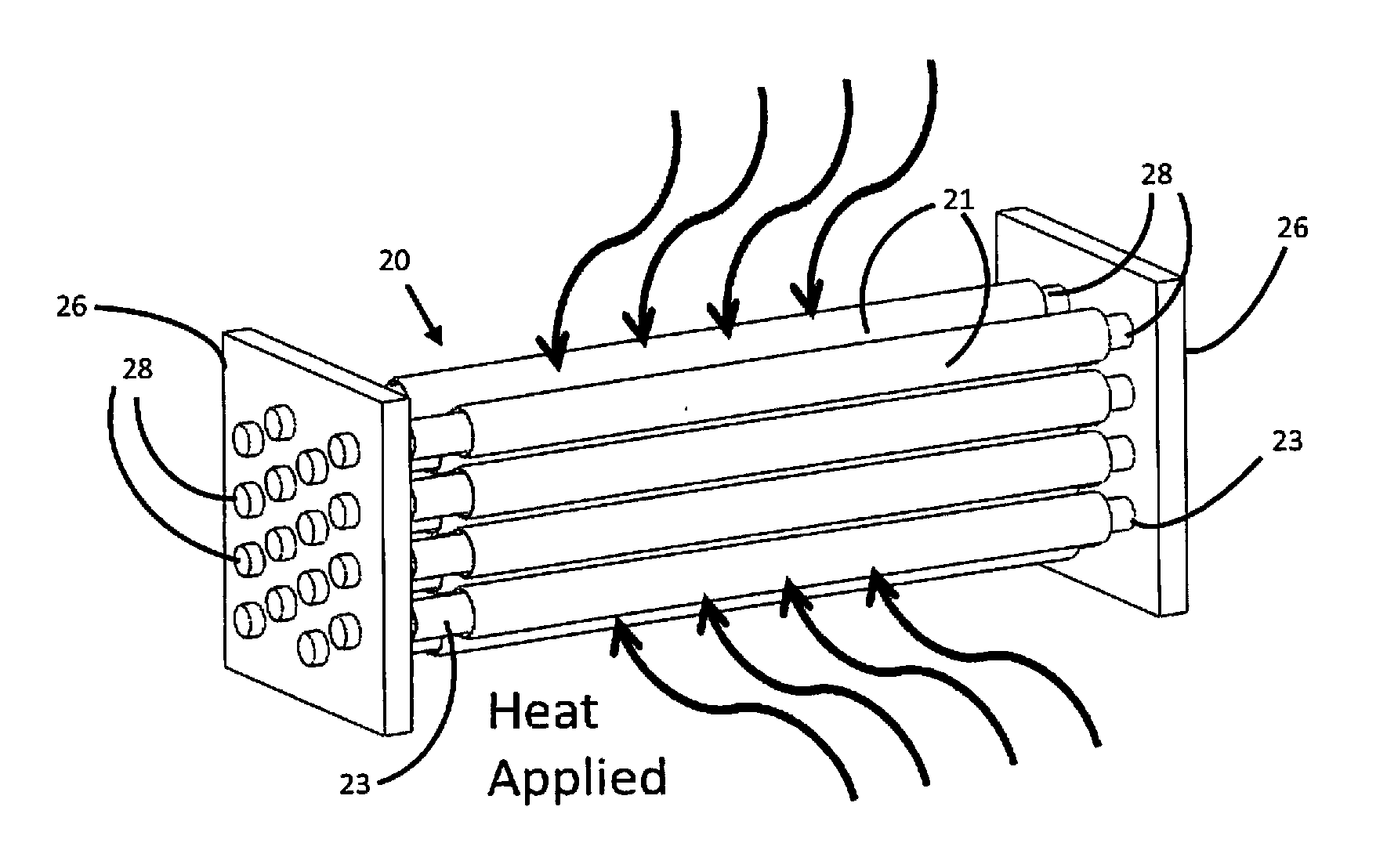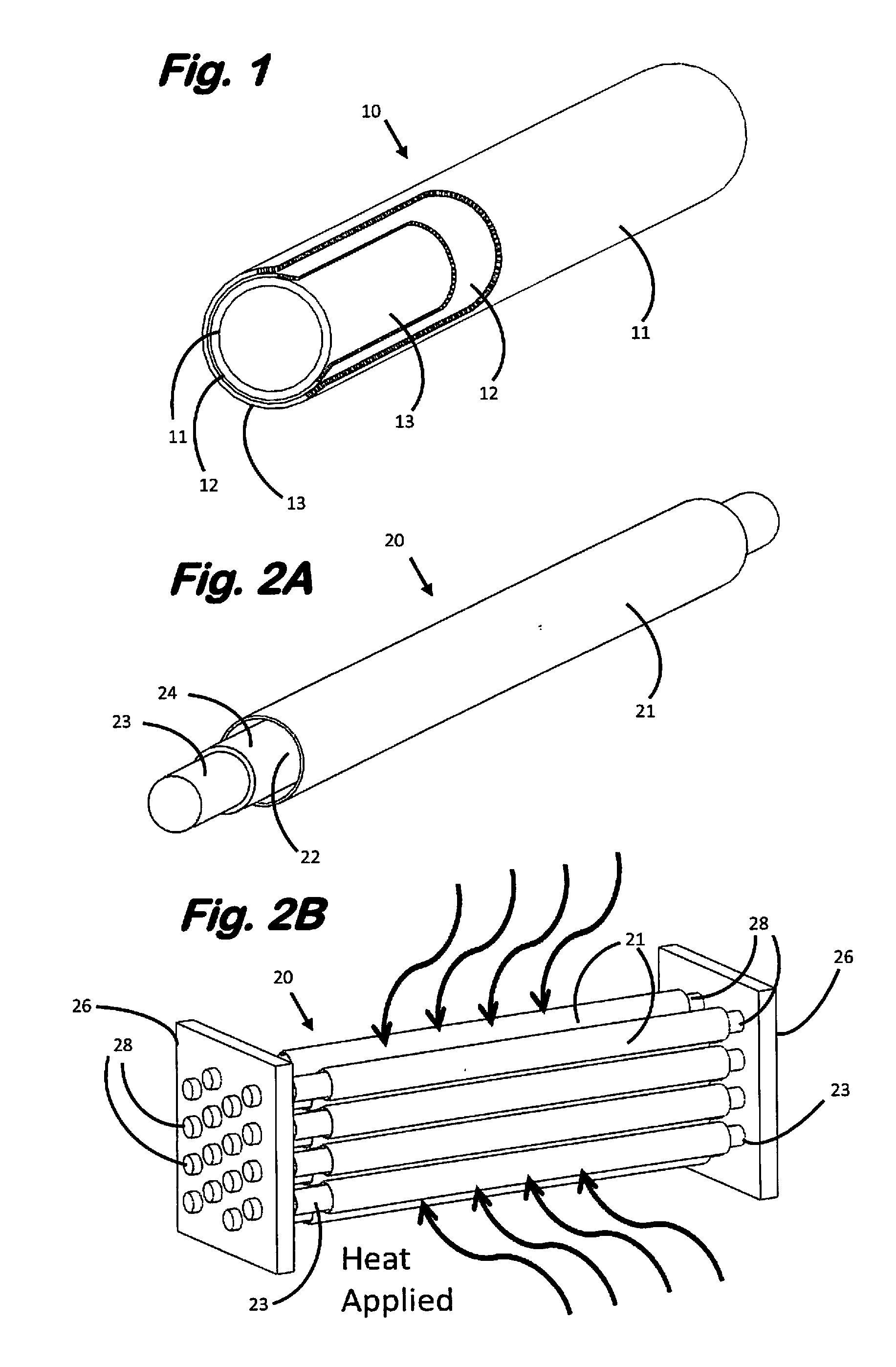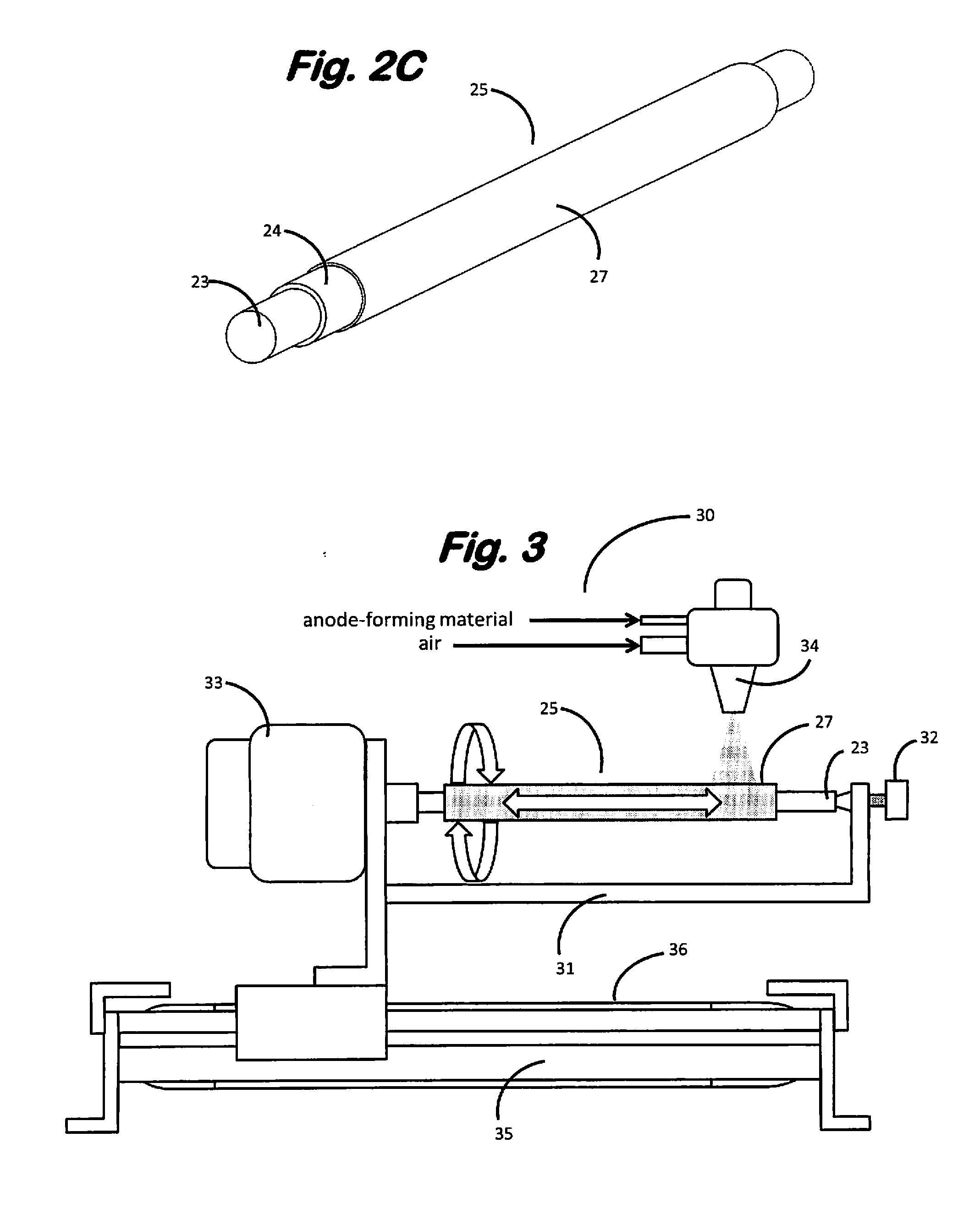Process for producing tubular ceramic structures
a technology of ceramic structures and processes, applied in the direction of cell components, final product manufacturing, sustainable manufacturing/processing, etc., can solve the problems of limiting the usefulness of extrusion methods for tubular ceramic structures, and each of these techniques for producing tubular ceramic structures is subject to certain inherent drawbacks and/or limitations, etc., to achieve precise predetermined dimensional tolerances, reduce size, and easily and conveniently vary or modify
- Summary
- Abstract
- Description
- Claims
- Application Information
AI Technical Summary
Benefits of technology
Problems solved by technology
Method used
Image
Examples
example
[0069]A green state tubular anode is produced possessing the following dimensions: length of 230 mm, outside diameter of 6.35 mm and wall thickness of 0.50 mm.
[0070]An anode-forming composition in the form of organic solvent slurry is provided by combining the following ingredients in the indicated amounts:
ComponentAmount (g)8-mol % yttrium zirconium oxide powder2.10NiO powder3.90methylethylketone (MEK)10.0polyvinylpyrrolidone (PVP) powder2.00
[0071]The tubular anode is produced from the foregoing anode-forming composition employing the following operations.
[0072](a) Forming the Mandrel-Spindle Assembly
[0073]Stock heat-shrinkable polyethylene terephthalate (PET) cylindrical tubing having an outside diameter of 7.6 mm is divided into 230 mm lengths with each tubular section being weighed to within +0.01 g accuracy. A cylindrical spindle of 305 mm length clad with a friction-reducing layer of polytetrafluoroethylene (PTFE) for a total spindle diameter of 6.35 mm is inserted into the bo...
PUM
| Property | Measurement | Unit |
|---|---|---|
| viscosity | aaaaa | aaaaa |
| viscosity | aaaaa | aaaaa |
| temperature | aaaaa | aaaaa |
Abstract
Description
Claims
Application Information
 Login to View More
Login to View More - R&D
- Intellectual Property
- Life Sciences
- Materials
- Tech Scout
- Unparalleled Data Quality
- Higher Quality Content
- 60% Fewer Hallucinations
Browse by: Latest US Patents, China's latest patents, Technical Efficacy Thesaurus, Application Domain, Technology Topic, Popular Technical Reports.
© 2025 PatSnap. All rights reserved.Legal|Privacy policy|Modern Slavery Act Transparency Statement|Sitemap|About US| Contact US: help@patsnap.com



